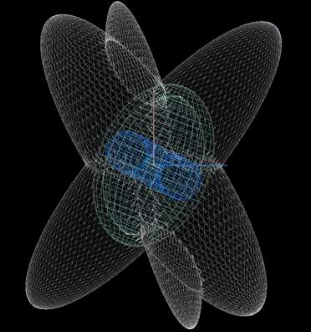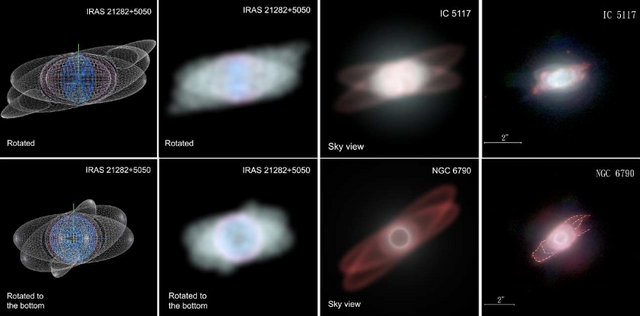Multipolar Planetary Nebula
No, planetary nebulae have nothing to do with planets. Instead, these are low and intermediate mass stars in the senior citizen phase of their lives. After they have puffed off their outer layers, the central stellar remnant is surrounded by cloud of gas and dust. The shape of this cloud can vary greatly from planetary nebula to planetary nebula (see Figure 1). Some of the planetary nebulae have spherical envelopes while some are jumbled knots. Radiation from the stellar remnant (which will evolve into a white dwarf) can excite regions in its dusty veil which can make for some spectacular images.

Despite all the images available from the Hubble Space Telescope (HST), astronomers are still uncertain what causes the twisted nature of the dust cloud of many planetary nebulae. The planetary nebula's shape is believed to be formed from the rotation of its central star. It could be that there is an unseen companion star inside the cloud and their gravitational dance stirs the cloud into the twisted structures we see from Earth. Another possibility is that the central star has multiple poles that could also account for the shape. Multipolar nebulae are objects that have at least two pairs of axial symmetric structures. Hsia et al. (2019) used optical and infrared images to study the planetary nebula IRAS 21282+5050 (see Figure 2).

As seen in Figure 2 above, the astronomers discovered three pairs of bipolar lobes in the nebula. Using infrared red observations, they also discovered an inner torus perpendicular to the elliptical shell. They then used these data to construct a model of the nebula to simulate the resulting shape in such a way that it could be rotated and viewed from various angles (see Figure 3).

Additionally, the research team used their model to compare with other planetary nebulae (see Figure 4). The model of IRAS 21282+5050 was rotated to attempt to show the same perspective for these other nebulae. It is interesting how similar they look, suggesting that perhaps multipolar systems are more common than previously thought and a lot of the differences in appearance can be resolved by rotating the viewing angle. Of course, more research is needed to confirm or rule this out.

References
Hsia, C-H et al. 2019, https://arxiv.org/pdf/1902.08851.pdf
This post has been voted on by the SteemSTEM curation team and voting trail in collaboration with @curie.
If you appreciate the work we are doing then consider voting both projects for witness by selecting stem.witness and curie!
For additional information please join us on the SteemSTEM discord and to get to know the rest of the community!
Congratulations @ptsouth97! You have completed the following achievement on the Steem blockchain and have been rewarded with new badge(s) :
Click here to view your Board
If you no longer want to receive notifications, reply to this comment with the word
STOPTo support your work, I also upvoted your post!